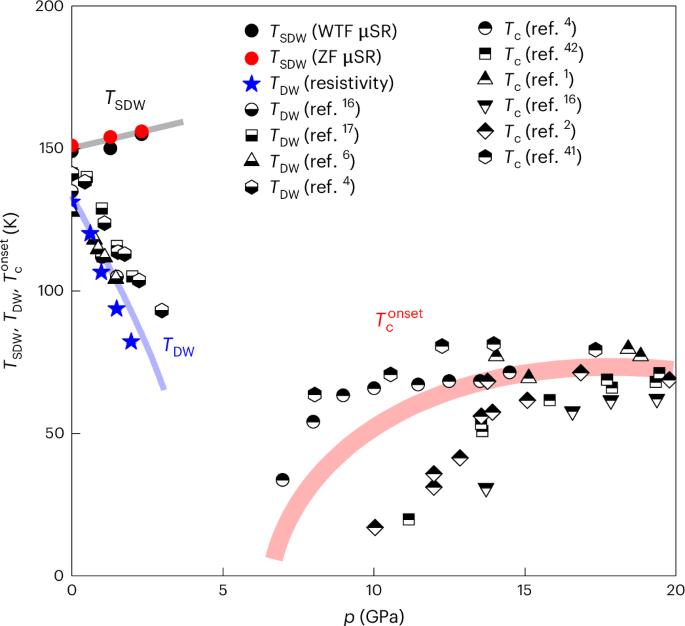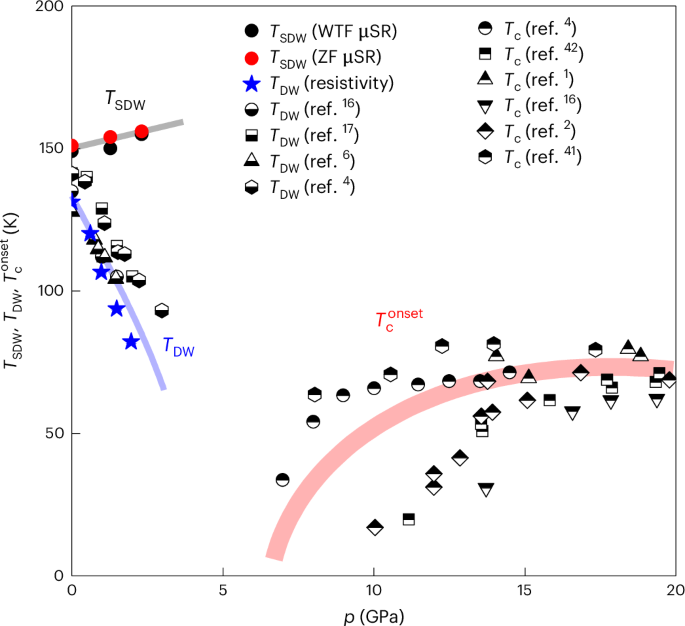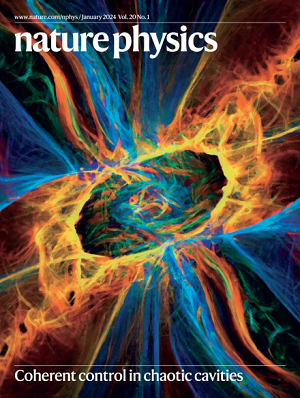Pressure-enhanced splitting of density wave transitions in La3Ni2O7–δ
IF 18.4
1区 物理与天体物理
Q1 PHYSICS, MULTIDISCIPLINARY
引用次数: 0
Abstract
The observation of superconductivity in La3Ni2O7–δ under pressure, following the suppression of a high-temperature density wave state, has attracted considerable attention. The nature of this density wave order was not clearly identified. Here we probe the magnetic response of the zero-pressure phase of La3Ni2O7–δ as hydrostatic pressure is applied, and find that the apparent single density wave transition at zero applied pressure splits into two. The comparison of our muon-spin rotation and relaxation experiments with dipole-field numerical analysis reveals the magnetic structure’s compatibility with a stripe-type arrangement of Ni moments, characterized by alternating lines of magnetic moments and non-magnetic stripes at ambient pressure. When pressure is applied, the magnetic ordering temperature increases, whereas the unidentified density wave transition temperature falls. Our findings reveal that the ground state of the La3Ni2O7–δ system is characterized by the coexistence of two distinct orders—a magnetically ordered spin density wave and a lower-temperature ordering that is most probably a charge density wave—with a notable pressure-enhanced separation between them. The density wave transition in a superconducting nickelate is shown to split when hydrostatic pressure is applied, indicating that it is composed of both a spin density wave and another form of ordered state.


La3Ni2O7 -δ中密度波跃迁的压力增强分裂
高温密度波抑制后,La3Ni2O7 -δ在压力下的超导性引起了人们的广泛关注。这种密度波阶的性质没有被清楚地确定。本文研究了静水压力作用下La3Ni2O7 -δ零压相的磁响应,发现零压力下的表观单密度波转变分为两个。我们的介子自旋和弛豫实验与偶极子场数值分析的比较揭示了磁性结构与Ni矩的条形排列的相容性,其特征是在环境压力下磁矩和非磁条的交替线。施加压力时,磁有序温度升高,而未识别密度波转变温度下降。我们的研究结果表明,La3Ni2O7 -δ体系的基态具有两种不同的有序共存的特征——磁有序的自旋密度波和更低温度的有序(很可能是电荷密度波),它们之间有明显的压力增强分离。
本文章由计算机程序翻译,如有差异,请以英文原文为准。
求助全文
约1分钟内获得全文
求助全文
来源期刊

Nature Physics
物理-物理:综合
CiteScore
30.40
自引率
2.00%
发文量
349
审稿时长
4-8 weeks
期刊介绍:
Nature Physics is dedicated to publishing top-tier original research in physics with a fair and rigorous review process. It provides high visibility and access to a broad readership, maintaining high standards in copy editing and production, ensuring rapid publication, and maintaining independence from academic societies and other vested interests.
The journal presents two main research paper formats: Letters and Articles. Alongside primary research, Nature Physics serves as a central source for valuable information within the physics community through Review Articles, News & Views, Research Highlights covering crucial developments across the physics literature, Commentaries, Book Reviews, and Correspondence.
 求助内容:
求助内容: 应助结果提醒方式:
应助结果提醒方式:


